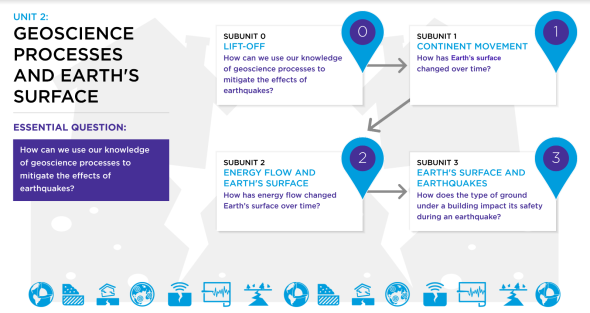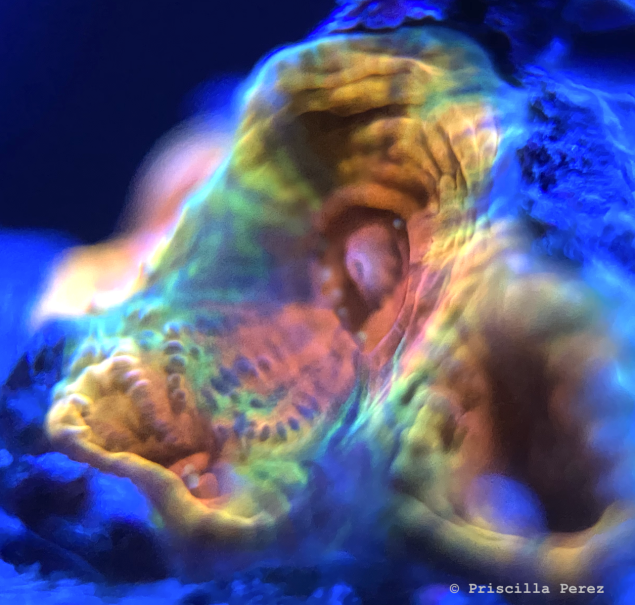
7th Grade Unit 2: Geoscience Processes and Earth's Surface Roadmap
This page hosts Unit 2: Geoscience Processes and Earth's Surface, and a roadmap of the 3 subunits that will be covered.
Subunit 1: Continent Movement
Link to this section
Below you will view and download:
🟦 Subunit Assessment Opportunities
🟦 5E Lesson Sequence
Subunit 1: Assessment Opportunities
Subunit 1 Assessment Opportunites
View and download (by making a copy)- Subunit 1 Assessments
What should my students know and be able to do?
What should I prioritize?
Note: The materials below are personal recommendations from teachers in the field.
Feel free to consider your context when deciding whether to follow these suggestions.
|
|
|
|
|
|
|
|
|
|
|
|
|
|
|
|
|
|
|
|
|
|
|
|
|
|
|
|
|
|
View and download (by making a copy)- Subunit 1 Assessments
Subunit 1: 5E Lesson Sequence
Subunit Description
📂 Download ALL lessons at one time for Unit 2: Subunit 1 from this folder. 📂
In this subunit, students gather evidence to support the argument that the continents have moved over time and are still moving today. They will use maps, diagrams, continent puzzle pieces, and articles as their sources.
| Lesson | Lesson Name | Teacher Document | Student Handout |
|---|---|---|---|
| 1 | Engage | ||
| 2 | Explore | ||
| 3 | Explain | ||
| 4 | Elaborate | 7.2 SU1 4Elaborate Teacher | |
| 5 | Evaluate | ||
📂 Download ALL lessons at one time for Unit 2: Subunit 1 from this folder. 📂
Subunit 2: Energy Flow and Earth's Surface
Link to this section
Below you will view and download:
🟦 Subunit Assessment Opportunities
🟦 5E Lesson Sequence
Subunit 2: Assessment Opportunities
Subunit 2 Assessment Opportunites
View and download (by making a copy)- Subunit 2 Assessments
What should my students know and be able to do?
What should I prioritize?
Note: The materials below are personal recommendations from teachers in the field.
Feel free to consider your context when deciding whether to follow these suggestions.
|
|
|
|
|
|
|
|
|
|
|
|
|
|
|
|
|
|
|
|
|
|
|
|
|
|
|
|
|
|
View and download (by making a copy)- Subunit 2 Assessments
Subunit 2: 5E Lesson Sequence
Subunit Description
📂 Download ALL lessons at one time for Unit 2: Subunit 2 from this folder. 📂
In this subunit, students will learn the two geoscience processes behind continental drift: convection currents within Earth’s layers and plate tectonics.
| Lesson | Lesson Name | Teacher Document | Student Handout |
|---|---|---|---|
| 1 | Engage | ||
| 2 | Explore | ||
| 3 | Explain | ||
| 4 | Elaborate | 7.2 SU2 4Elaborate Teacher | |
| 5 | Evaluate | ||
📂 Download ALL lessons at one time for Unit 2: Subunit 2 from this folder. 📂
Subunit 3: Earth's Surface and Earthquakes
Link to this section
Below you will view and download:
🟦 Subunit Assessment Opportunities
🟦 5E Lesson Sequence
Subunit 3: Assessment Opportunities
Subunit 3 Assessment Opportunites
View and download (by making a copy)- Subunit 3 Assessments
What should my students know and be able to do?
What should I prioritize?
Note: The materials below are personal recommendations from teachers in the field.
Feel free to consider your context when deciding whether to follow these suggestions.
|
|
|
|
|
|
|
|
|
|
|
|
|
|
|
|
|
|
|
|
|
|
|
|
|
|
|
|
|
|
View and download (by making a copy)- Subunit 3 Assessments
Subunit 3: 5E Lesson Sequence
Subunit Description
📂 Download ALL lessons at one time for Unit 2: Subunit 3 from this folder. 📂
In this subunit, students focus on how different types of rocks amplify earthquake shaking. They also gather evidence about how different types of rocks are formed. At the end of this subunit, students use what they have learned throughout the unit to complete the Culminating Project.
| Lesson | Lesson Name | Teacher Document | Student Handout |
|---|---|---|---|
| 1 | Engage | ||
| 2 | Explore | ||
| 3 | Explain | ||
| 4 | Elaborate | 7.2 SU3 4Elaborate Teacher | |
| 5 | Evaluate | ||
📂 Download ALL lessons at one time for Unit 2: Subunit 3 from this folder. 📂
Unit 2: Geoscience Processes and Earth's Surface Documents
Link to this section
Below you will view and download: Unit Plan, Standards, Culminating Project Assessments and Rubrics, Common Misconceptions, Materials, Unit 0: Lift-Off Lessons and Resources.
7.2 Geoscience Processes and Earth's Surface: Overview
Overview
In this unit, students consider how geoscience processes have shaped Earth’s surface over time. Through the Culminating Project, students will investigate the factors that lead to earthquakes and shake amplification and how to mitigate the effects of an earthquake.
In Subunit 1, students gather evidence to support an argument that the continents have moved over time. In Subunit 2, they learn the geoscience processes behind the movement of the continents—convection currents below Earth’s surface and plate tectonics. In Subunit 3, students focus on how different types of rocks amplify earthquake shaking. They also gather evidence about how different types of rocks are formed.
For the Group Culminating Project, students work together to create a presentation that outlines their location recommendation for a new housing development in the San Francisco Bay Area. The group should take into account soil and rock content, distance from plate boundaries, cost, and additional criteria to make their choice. For the Individual Culminating Project, each student writes an Earthquake Mitigation Plan using what they have learned in the unit. This document should describe additional ways to reduce the impact of earthquakes and/or use technology to monitor them.
7.2 Geoscience Processes and Earth's Surface: Unit Plan
Unit 2: Geoscience Processes and Earth's Surface - Unit Plan
|
|
||
|
|
||
|
[Clarification Statement: Examples of data include similarities of rock and fossil types on different continents, the shapes of the continents (including continental shelves), and the locations of ocean structures (such as ridges, fracture zones, and trenches).] [Assessment Boundary: Paleomagnetic anomalies in oceanic and continental crust are not assessed.] [Clarification Statement: Emphasis is on the processes of melting, crystallization, weathering, deformation, and sedimentation, which act together to form minerals and rocks through the cycling of Earth’s materials.] [Assessment Boundary: Assessment does not include the identification and naming of minerals.]
|
|
|
|
|
||
|
|
||
|
|
||
|
|
||
|
|
||
|
|
||
|
|
||
|
|
||
|
|
||
|
|
|
|
|
|
||||
|
|
|
|
|
|
|
|
|
|
|
|
|
|
|
|
||
|
|
|
|
||
|
|
||||
|
|
|
|
||
|
|
|
|||
|
|
|
|
|
|
|
|
||||
|
|
|
|
|
|
|
|
|
|||
|
|
|
|
|
|
|
|
||||
|
|
|
|||
|
|
||||
|
|
|
|
|
|
|
|
|
|
||
|
|
|
|||
“Disciplinary Core Ideas, Science and Engineering Practices, and Crosscutting Concepts” are reproduced verbatim from A Framework for K-12 Science Education: Practices, Crosscutting Concepts, and Core Ideas. DOI: https://doi.org/10.17226/13165. National Research Council; Division of Behavioral and Social Sciences and Education; Board on Science Education; Committee on a Conceptual Framework for New K-12 Science Education Standards. National Academies Press, Washington, DC. This material may be reproduced for noncommercial purposes and used by other parties with this attribution. If the original material is altered in any way, the attribution must state that the material is adapted from the original. All other rights reserved.
7.2 Geoscience Processes and Earth's Surface: Standards
Geoscience Processes and Earth's Surface
Next Generation Science Standards Performance Expectations
|
|
Assessment Boundary: Paleomagnetic anomalies in oceanic and continental crust are not assessed.] |
|
|
Assessment Boundary: Assessment does not include the identification and naming of minerals.] |
|
|
|
|
|
|
|
|
|
NGSS Lead States. 2013. Next Generation Science Standards: For States, By States. Washington, DC: The National Academies Press.
Disciplinary Core Ideas
ESS2.A: Earth’s Materials and Systems
- All Earth processes are the result of energy flowing and matter cycling within and among the planet’s systems. This energy is derived from the sun and Earth’s hot interior. The energy that flows and matter that cycles produce chemical and physical changes in Earth’s materials and living organisms. (MS-ESS2-1)
- The planet’s systems interact over scales that range from microscopic to global in size, and they operate over fractions of a second to billions of years. These interactions have shaped Earth’s history and will determine its future. (MS-ESS2-2)
ESS2.B: Plate Tectonics and Large-Scale System Interactions
- Maps of ancient land and water patterns, based on investigations of rocks and fossils, make clear how Earth’s plates have moved great distances, collided, and spread apart. (MS-ESS2-3)
ESS2.C: The Roles of Water in Earth’s Surface Processes
- Water’s movements—both on the land and underground—cause weathering and erosion, which change the land’s surface features and create underground formations. (MS-ESS2-2)
ESS3.B: Natural Hazards
- Mapping the history of natural hazards in a region, combined with an understanding of related geologic forces can help forecast the locations and likelihoods of future events. (MS-ESS3-2)
ETS1.A: Defining and Delimiting Engineering Problems
- The more precisely a design task’s criteria and constraints can be defined, the more likely it is that the designed solution will be successful. Specification of constraints includes consideration of scientific principles and other relevant knowledge that are likely to limit possible solutions. (MS-ETS1-1)
Science and Engineering Practices
*Developing and Using Models (Focal Practice)
Modeling in 6–8 builds on K–5 experiences and progresses to developing, using, and revising models to describe, test, and predict more abstract phenomena and design systems.
- Develop and use a model to describe phenomena. (MS-ESS2-1)
Constructing Explanations and Designing Solutions
Constructing explanations and designing solutions in 6–8 builds on K–5 experiences and progresses to include constructing explanations and designing solutions supported by multiple sources of evidence consistent with scientific ideas, principles, and theories.
- Construct a scientific explanation based on valid and reliable evidence obtained from sources (including the students’ own experiments) and the assumption that theories and laws that describe nature operate today as they did in the past and will continue to do so in the future. (MS-ESS2-2)
Analyzing and Interpreting Data
Analyzing data in 6–8 builds on K–5 experiences and progresses to extending quantitative analysis to investigations, distinguishing between correlation and causation, and basic statistical techniques of data and error analysis.
- Analyze and interpret data to provide evidence for phenomena. (MS-ESS2-3)
Asking Questions and Defining Problems
Asking questions and defining problems in grades 6–8 builds on grades K–5 experiences and progresses to specifying relationships between variables, and clarifying arguments and models.
Crosscutting Concepts
*Stability and Change (Focal Crosscutting Concept)
-
Explanations of stability and change in natural or designed systems can be constructed by examining the changes over time and processes at different scales, including the atomic scale. (MS-ESS2-1)
Scale, Proportion, and Quantity
- Time, space, and energy phenomena can be observed at various scales using models to study systems that are too large or too small. (MS-ESS2-2)
Patterns
- Patterns in rates of change and other numerical relationships can provide information about natural systems. (MS- ESS2-3 and MS-ESS3-2)
“Disciplinary Core Ideas, Science and Engineering Practices, and Crosscutting Concepts” are reproduced verbatim from A Framework for K-12 Science Education: Practices, Crosscutting Concepts, and Core Ideas. DOI: https://doi.org/10.17226/13165. National Research Council; Division of Behavioral and Social Sciences and Education; Board on Science Education; Committee on a Conceptual Framework for New K-12 Science Education Standards. National Academies Press, Washington, DC. This material may be reproduced for noncommercial purposes and used by other parties with this attribution. If the original material is altered in any way, the attribution must state that the material is adapted from the original. All other rights reserved.
Connections to the Nature of Science
Scientific Knowledge is Open to Revision in Light of New Evidence
- Science findings are frequently revised and/or reinterpreted based on new evidence. (MS-ESS2-3)
Connections to Engineering, Technology, and Applications of Science
Influence of Science, Engineering, and Technology on Society and the Natural World
- The uses of technologies and any limitations on their use are driven by individual or societal needs, desires, and values; by the findings of scientific research; and by differences in such factors as climate, natural resources, and economic conditions. Thus technology use varies from region to region and over time. (MS-ESS3-2)
- All human activity draws on natural resources and has both short and long-term consequences, positive as well as negative, for the health of people and the natural environment. (MS-ETS1-1)
- The uses of technologies and limitations on their use are driven by individual or societal needs, desires, and values; by the findings of scientific research; and by differences in such factors as climate, natural resources, and economic conditions. (MS-ETS1-1)
NGSS Lead States. 2013. Next Generation Science Standards: For States, By States. Washington, DC: The National Academies Press.
Link to Connect the 7th Grade Geoscience Processes and Earth’s Surface Unit with Prior Knowledge.
7.2 Geoscience Processes and Earth's Surface: Culminating Project Assessments and Rubrics
Culminating Project Assessments and Rubrics
📂Download ALL files from 7.2 Culminating Project Assessments folder.📂
| Culminating Project File Docs |
|---|
| 7.2 Main–Culminating Projects |
| 7.2 Oral Presentation Rubric |
| 7.2 Science and Engineering Content Rubric |
| 7.2 Science and Engineering Practices Rubric |
📂Download ALL files from 7.2 Culminating Project Assessments folder.📂
7.2 Geoscience Processes and Earth's Surface: Common Misconceptions
Common Misconceptions
Lift-Off
|
|
|
|
|
|
Subunit 1: Continent Movement
|
|
|
|
|
|
|
|
|
Subunit 2: Energy Flow and Earth’s Surface
|
|
|
|
|
|
|
|
|
|
|
|
Subunit 3: Earth’s Surface and Earthquakes
|
|
|
|
(http://assessment.aaas.org/misconceptions/1/WE/222/WEM018) |
(http://assessment.aaas.org/misconceptions/1/WE/222/WEM018) |
|
(http://assessment.aaas.org/misconceptions/1/WE/222/WEM080) |
(http://assessment.aaas.org/misconceptions/1/WE/222/WEM080) |
7.2 Geoscience Processes and Earth's Surface: Materials
Materials
The Unit 2: Geoscience Processes and Earth’s Surface Materials table includes all of the items needed to teach five sections of this unit in a classroom of 32 students (eight groups of four.) A detailed breakdown of how these items are used throughout the unit can be found in your Teacher Background Section at the subunit level and in each individual lesson in your Teacher Edition.
- Permanent materials have already been provided to all middle schools in the district and are expected to be reused from year to year.
- Consumable materials are replenished on an as-needed basis from year to year.
- Teacher Provided materials must be supplied by teachers each year.
Unit 2: Geoscience Processes and Earth’s Surface Materials
|
|
|
|
|
|
|
|
7.2 Geoscience Processes and Earth's Surface: Subunit 0: Lift-Off Lessons
Subunit 0: Lift-Off
📂 Download ALL lessons at one time for Subunit 0: Lift-Off from this folder.📂
Lessons
| Lift-Off Lesson Documents |
|---|
| 7.2 SU0 General Groupwork Slide |
| 7.2 SU0 Liftoff Slides |
| 7.2 SU0 Liftoff Teacher |
| 7.2 SU0 Liftoff Student |
📂 Download ALL lessons at one time for Subunit 0: Lift-Off from this folder.📂
7.2 Geoscience Processes and Earth's Surface: Do you want to learn more about this unit?
Do you want to learn more about this unit?
Resources
Here are some resources for Unit 7.2 Geoscience Processes and Earth’s Surface:
Continental Drift, Convection Currents, and Plate Tectonics
United States Geological Survey (USGS): This Dynamic Earth: The Story of Plate Tectonics
This Dynamic Earth--Contents [USGS]. Accessed November 1, 2019. https://pubs.usgs.gov/gip/dynamic/dynamic.html.
Earth: A Dynamic Structure (Home). Accessed November 1, 2019. http://www.ucmp.berkeley.edu/education/dynamic/session1/index.html.
Exploratorium: Inverted Bottles
“Inverted Bottles.” Exploratorium, August 1, 2017. https://www.exploratorium.edu/snacks/inverted-bottles.
Saving the Bay: The Formation of San Francisco Bay
“The Formation of San Francisco Bay.” Accessed November 1, 2019. http://education.savingthebay.org/wp-content/guides/The-Formation-of-San-Francisco-Bay.pdf.
Federal Emergency Management Agency (FEMA): Designing for Earthquakes
“Www.fema.gov.” Accessed November 1, 2019. https://www.fema.gov/media-library-data/20130726-1556-20490-5679/fema454_complete.pdf.
USGS: Earthquake Hazards Program: Earthquake Topics
“Earthquake Topics.” U.S. Geological Survey. Accessed November 1, 2019. https://earthquake.usgs.gov/learn/topics/.
KQED News: The California Report: California’s Other Drought: A Major Earthquake Is Overdue "California's Other Drought: A Major Earthquake Is Overdue.” KQED, February 14, 2018. https://www.kqed.org/news/11648324/californias-other-drought-a-major-earthquake-is-overdue.
KQED News: Inside Candlestick Park on the Night the Earth Shook KQED News: Inside Candlestick Park on the Night the Earth Shook
Shafer, Scott. “Inside Candlestick Park on the Night the Earth Shook.” KQED, December 20, 2013. https://www.kqed.org/news/121413/inside-candlestick-park-on-the-night-the-earth-shook.
Emergency Management: Earthquake Early Warning in Mexico Reminds California What it Still Lacks
“Earthquake Early Warning in Mexico Reminds California What It Still Lacks.” Government Technology State & Local Articles - e.Republic. Accessed November 1, 2019. https://www.govtech.com/em/disaster/Earthquake-Early-Warning-in-Mexico-Reminds-California-What-it-Still-Lacks.html.
The Great California ShakeOut (https://www.shakeout.org/california
Rock Cycle
KQED Science: QUEST: California’s (and the World’s) Oldest Rocks
Alden, Andrew, and KQED Science Contributor. “California's (and the World's) Oldest Rocks.” QUEST, April 12, 2012. https://ww2.kqed.org/quest/2012/03/29/californias-and-the-worlds-oldest-rocks/.
Culminating Project: Soil Shake Amplification and Mitigation Strategies
USGS ShakeAlert lecture video: The Path to West Coast Early Warning
Public Lecture Series. Accessed November 1, 2019. https://online.wr.usgs.gov/calendar/2018/jan18.html.
Emergency Management: Earthquake Early Warning in Mexico Reminds California What it Still Lacks
“Earthquake Early Warning in Mexico Reminds California What It Still Lacks.” Government Technology State & Local Articles - e.Republic. Accessed November 1, 2019. http://www.govtech.com/em/disaster/Earthquake-Early-Warning-in-Mexico-Reminds-California-What-it-Still-Lacks.html
The Great California ShakeOut
“The Great California ShakeOut.” Great ShakeOut Earthquake Drills - Select Your ShakeOut Region. Accessed November 1, 2019. https://www.shakeout.org/california.
Assessment Practice Items
“SNAP Assessments for NGSS.” SNAP Assessments for NGSS | Stanford NGSS Assessment Project.
- ESS2-1 search results (https://snapgse.stanford.edu/search/node/MS-ESS2-1)
“Search.” Stanford NGSS Assessment Project. Accessed November 1, 2019. https://snapgse.stanford.edu/search/node/MS-ESS2-1.
“Short-Response Items.” Short-response items | Stanford NGSS Assessment Project. Accessed November 1, 2019. https://snapgse.stanford.edu/snap-assessments/short-response-items-0.
“Instructionally-Embedded Assessments.” Instructionally-Embedded Assessments | Stanford NGSS Assessment Project. Accessed November 1, 2019. https://snapgse.stanford.edu/snap-assessments/instructionally-embedded-assessments.
- Short-response items
“Short Performance Assessments.” Short Performance Assessments | Stanford NGSS Assessment Project. Accessed November 1, 2019. https://snapgse.stanford.edu/snap-assessments/short-performance-assessments.
- ESS3-2 search results
“Search.” Search | Stanford NGSS Assessment Project. Accessed November 1, 2019. https://snapgse.stanford.edu/search/node/MS-ESS3-2
- SNAP reports
“SNAP Reports.” SNAP Reports | Stanford NGSS Assessment Project. Accessed November 1, 2019. https://snapgse.stanford.edu/snap-reports/snap-reports.
- Instructionally embedded assignments
“Instructionally-Embedded Assessments.” Instructionally-Embedded Assessments | Stanford NGSS Assessment Project. Accessed November 1, 2019. https://snapgse.stanford.edu/snap-assessments/instructionally-embedded-assessments. - Short-response items
“Short-Response Items.” Short-response items | Stanford NGSS Assessment Project. Accessed November 1, 2019. https://snapgse.stanford.edu/snap-assessments/short-response-items - Short performance assessments
Short Performance Assessments.” Short Performance Assessments | Stanford NGSS Assessment Project. Accessed November 1, 2019. https://snapgse.stanford.edu/snap-assessments/short-performance-assessmets.
Other Resources Used in 7.2 Geoscience Processes and Earth’s Surface
Continental Drift Puzzle. Accessed November 1, 2019. http://www.geo.cornell.edu/hawaii/220/PRI/continental_puzzle.html.
“Designing for Earthquakes: A Manual for Architects.” Designing for Earthquakes: A Manual for Architects | FEMA.gov. Accessed November 1, 2019. https://www.fema.gov/media-library-data/20130726-1556-20490-5679/fema454_complete.pdf.
“Devastating Earthquakes.” Tuva. Accessed November 1, 2019. https://tuvalabs.com/datasets/devastating_earthquakes/activities.
Developing the theory [This Dynamic Earth, USGS]. Accessed November 1, 2019. https://pubs.usgs.gov/gip/dynamic/developing.html.
Earthquakecountry.org 2019 http://www.earthquakecountry.org/library/ShakeOut_Recommended_Earthquake_Safety_Actions.pdf [Accessed 24 Oct. 2019].
Green, Matthew. “Real-Time Interactive Earthquake Map: Get to Know Your Local Faults.” KQED, August 5, 2019. https://www.kqed.org/lowdown/13923/interactive-earthquake-map-get-to-know-your-neighborhood-fault-lines.
Historical perspective [This Dynamic Earth, USGS]. Accessed November 1, 2019. https://pubs.usgs.gov/gip/dynamic/historical.html.
“Make a Plan.” SF72. Accessed November 1, 2019.
https://www.sf72.org/plan.
“Pie-Pan Convection.” Exploratorium, August 1, 2017. https://www.exploratorium.edu/snacks/pie-pan-convection?media=7442.
“SF72.” In an Emergency. Accessed November 1, 2019.
https://www.sf72.org/.
Staff, QUEST. “San Francisco Bay Area Earthquakes and Faults.” QUEST, April 15, 2016. https://ww2.kqed.org/quest/2016/04/15/san-francisco-bay-area-earthquakes-and-faults/.
“States of Matter.” PhET, October 3, 2019.
https://phet.colorado.edu/en/simulation/states-of-matter.
Some unanswered questions [This Dynamic Earth, USGS]. Accessed November 1, 2019. https://pubs.usgs.gov/gip/dynamic/unanswered.html#anchor19928310.
Understanding plate motions [This Dynamic Earth, USGS]. Accessed November 1, 2019. https://pubs.usgs.gov/gip/dynamic/understanding.html#anchor6715825.
What is a fault and what are the different types? Accessed November 1, 2019. https://www.usgs.gov/faqs/what-a-fault-and-what-are-different-types?qt-news_science_products=7#qt-news_science_products.
“What Is Mitigation?” What is Mitigation?. FEMA.gov. Accessed November 1, 2019. https://www.fema.gov/what-mitigation.
View and download (by making a copy) of Resources
Note: The CC BY-NC 4.0 License does not apply to photos, images, articles, and other materials within the curriculum that have been licensed by San Francisco Unified School District and Stanford University (the Authors). These include but are not limited to photos from commercial stock photo/image agencies such as Shutterstock.com or Getty Images (iStock.com) and photos or graphics where the Authors obtained permission from organizations such as UCMP or SERP. This CC BY-NC 4.0 License also does not apply to articles that the Authors received permission to reprint [Reprinted with Permission]. You can identify such a photo, image, or licensed material by looking at the credit embedded within or associated with the content. You are allowed to reproduce the licensed material for your own personal, classroom, non-commercial use only, BUT (i) you may not modify, alter, adapt, or otherwise create any derivative work from, a licensed material and (ii) you may not distribute, transmit or disseminate a licensed material or any copy or derivative work thereof, to any third party, whether by itself, as part of a large works, or otherwise.
Note also, that throughout the student pages, there are some icons created by SFUSD and Stanford that may not have a credit line because of lack of space.
The general icons that follow were created by the San Francisco Unified School District and Stanford University and are all [CC BY-NC 4.0]:
These culminating project icons that follow were created or photographed by the San Francisco Unified School District and Stanford University and are all [CC BY-NC 4.0]:
7th Grade Science Units Link to this section
This page was last updated on July 25, 2023







